September 29, 2018
It’s leaky and battered now, but one of Winnipeg’s original streetcars is on its way back to its former glory.
Streetcar 356 first hit the city's streets in 1909 and was on the road until 1955. That’s the year the city sold off its fleet of electric streetcars in favour of the new trolley model and Streetcar 356 wound up in storage.
Now, after years of fundraising, a small group of volunteers with Heritage Winnipeg are at work on the painstaking job of restoring it.
For Robert Loiselle, one of the group’s leaders, it’s a labour of love that helps him feel connected to his late grandfather, who operated Winnipeg public transit vehicles for nearly 40 years.
"It's a way, I guess, to honour ... his spirit and who he was," Loiselle said.
"Every time I'm in the streetcar, I can almost imagine my grandfather at front, running the streetcar and interacting with people and, you know, making people laugh.”
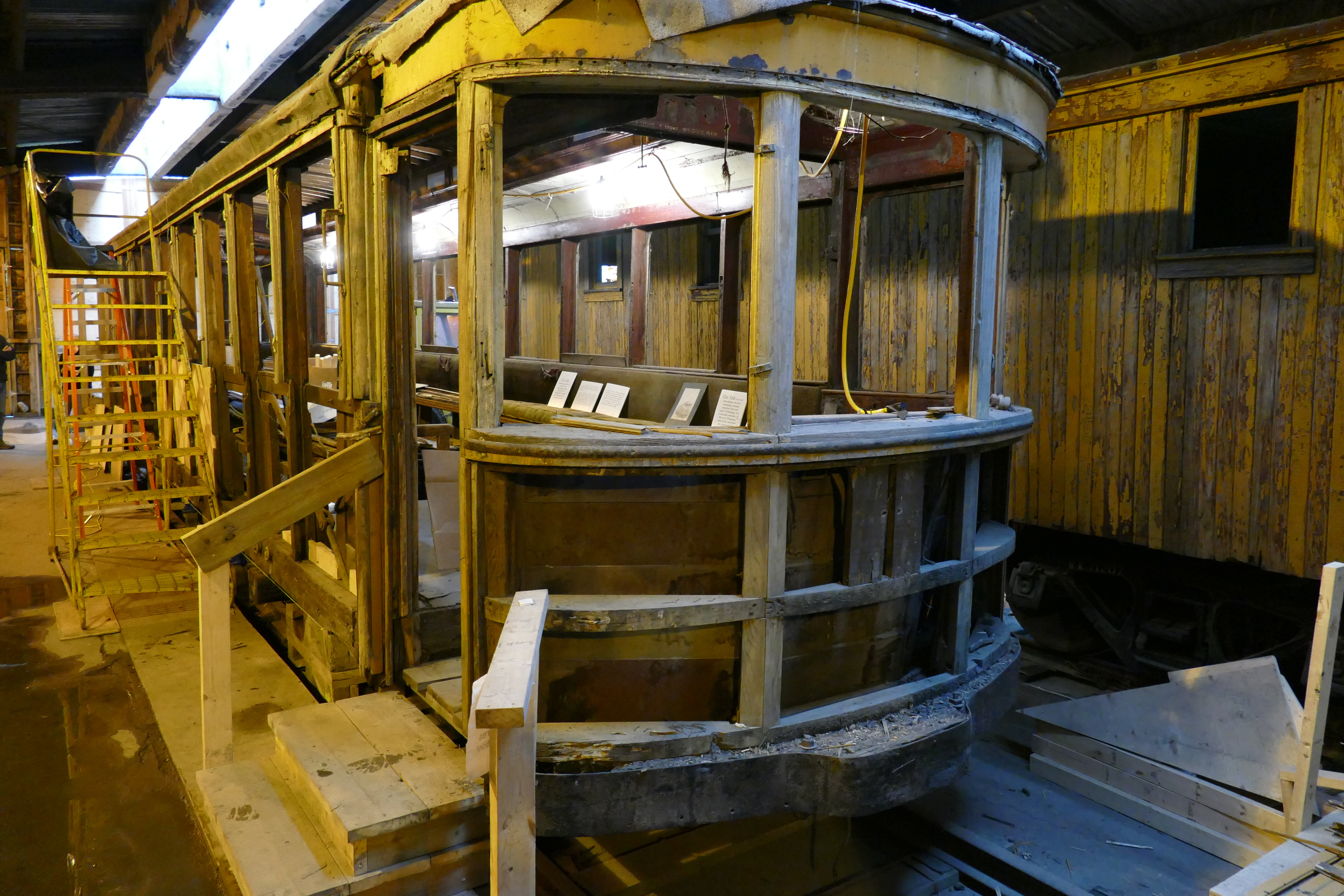
His grandfather’s career spanned the city’s transition to trolley cars and then diesel buses before he retired in 1983, Loiselle said. But it started with the streetcar in 1945, right after he returned from serving in the Second World War.
It was Victor Beaudry, his grandfather, who taught him the carpentry skills he now relies on to piece Streetcar 356 back together.
“I think it's magical,” Loiselle said. “Some people play with model trains. I get to play with the big things.”
Streetcar 356, like all of Winnipeg's streetcars at the time, was built in the city. It rolled out of the Winnipeg Electric Railway Company shop on Osborne Street and proceeded to log more than 45 years of service, getting people where they needed to go.
It’s 15 metres long and more than two metres wide, Loiselle said. Aside from the metal carriage underneath, most of it is made of wood — largely oak, fir and some poplar. It’s all expertly done by craftsmen from the era, Loiselle said.
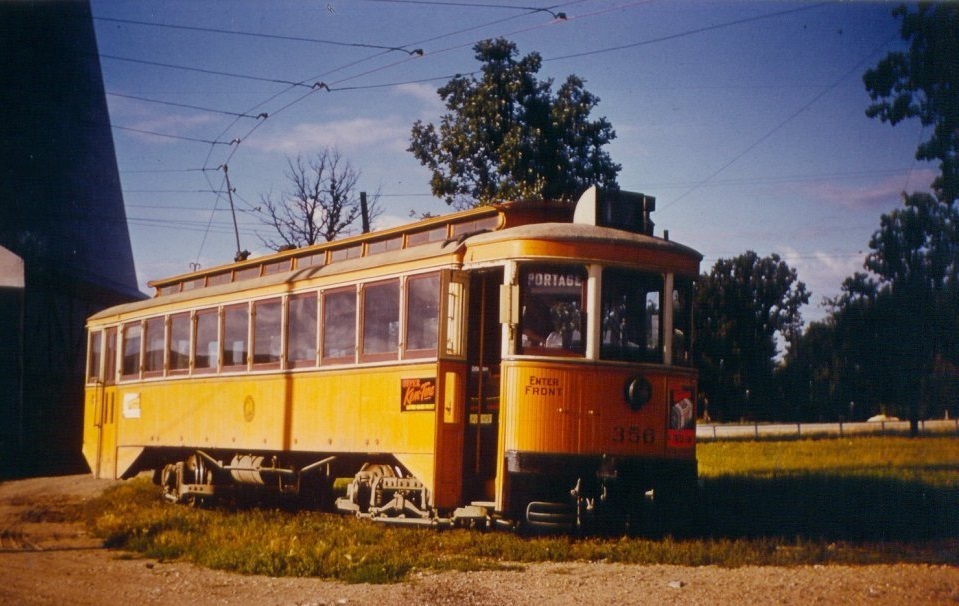
Long wooden benches like pews run up the sides of the streetcar, with small vestibules at either end. The small windows at the top were originally all stained glass, Loiselle said, and he figures the little doorbell-like buttons that riders pressed to request a stop were made of ivory.
“This was really riding in style,” he said. “I mean, these were so well built, they were comfortable.... There was a certain charm to them.”
Years of disuse meant much of the frame was rotting away when Loiselle and his team started working on it, he said. As they've peeled back the rotting wood and rusting tin, they've found a few small children’s toys, a penny from 1943 and a whole pile of old transfer tickets.
“So far no gold bricks and no dollar bills. But you know, who knows,” Loiselle said.
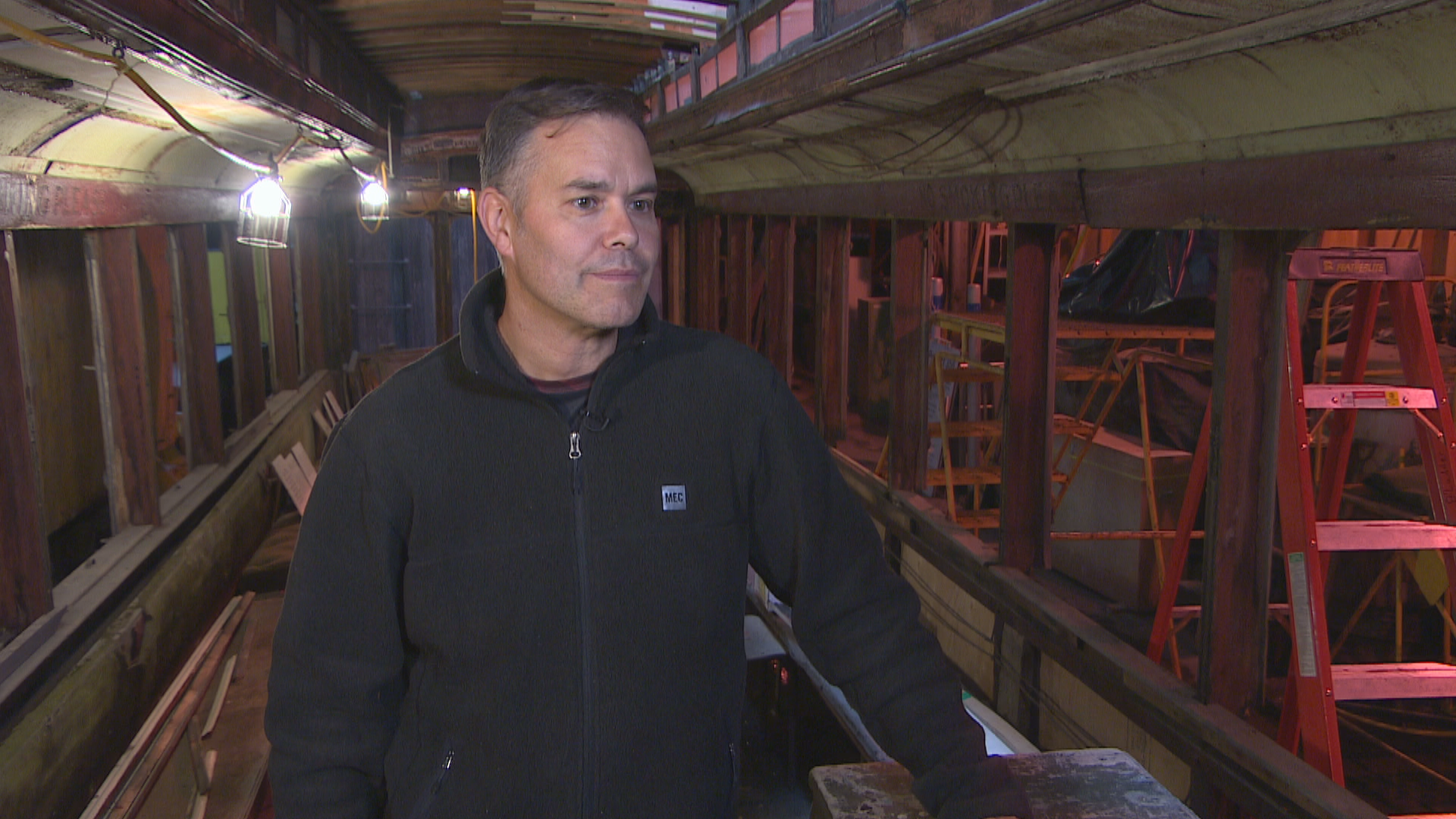
As it is now, Streetcar 356 has been stripped down to its bones. There’s a big hole in the roof where the rain gets through. Slim wooden panels that neatly covered its exterior are gone, exposing huge timber beams across the bottom.
The numbers and "No smoking please" script, originally painted neatly in gold, are peeling away. By the back door, a little orange notice warns not to leave kids alone on the pressure-operated door opener called a “treadle,” though it doesn’t work anymore.
The foot-operated bell that riders in the back would use to get the driver’s attention still works. When Loiselle expertly taps it with his boot, the bell rings loud and clear.
After it was retired in 1955, the streetcar sat in a storage yard for at least 25 years before Heritage Winnipeg took ownership of it. In 1997, the non-profit organization moved it to a back room of the Winnipeg Railway Museum, in Union Station on Main Street, where it remains.
Loiselle got involved in the project seven years ago. Since then, Heritage Winnipeg has formed a Streetcar 356 committee and, in the last couple of years, started fundraising in earnest.
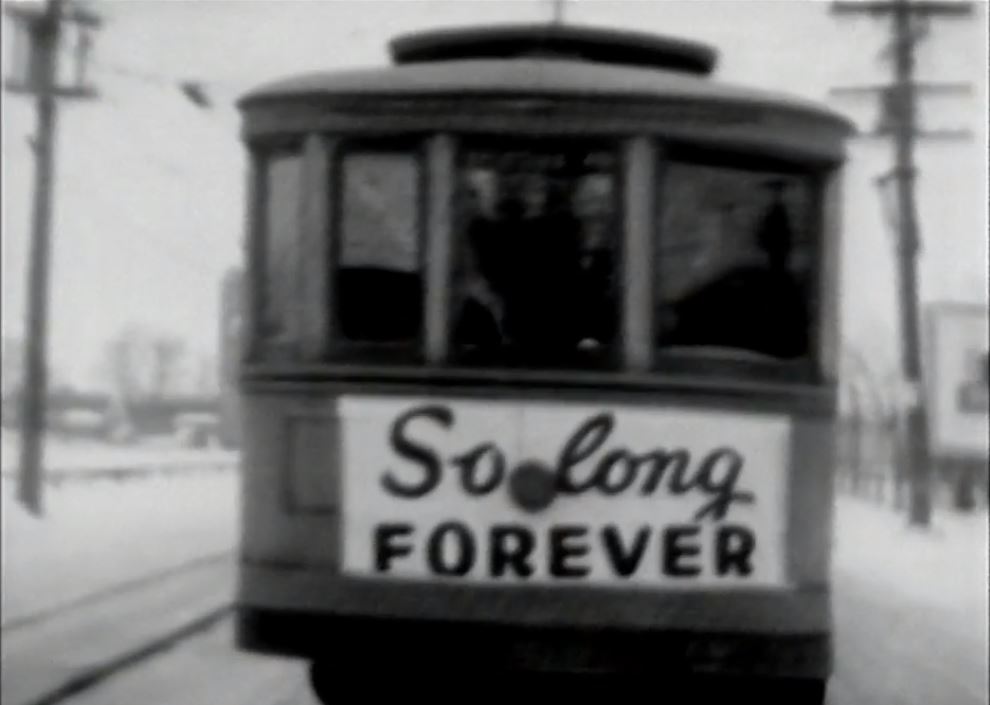
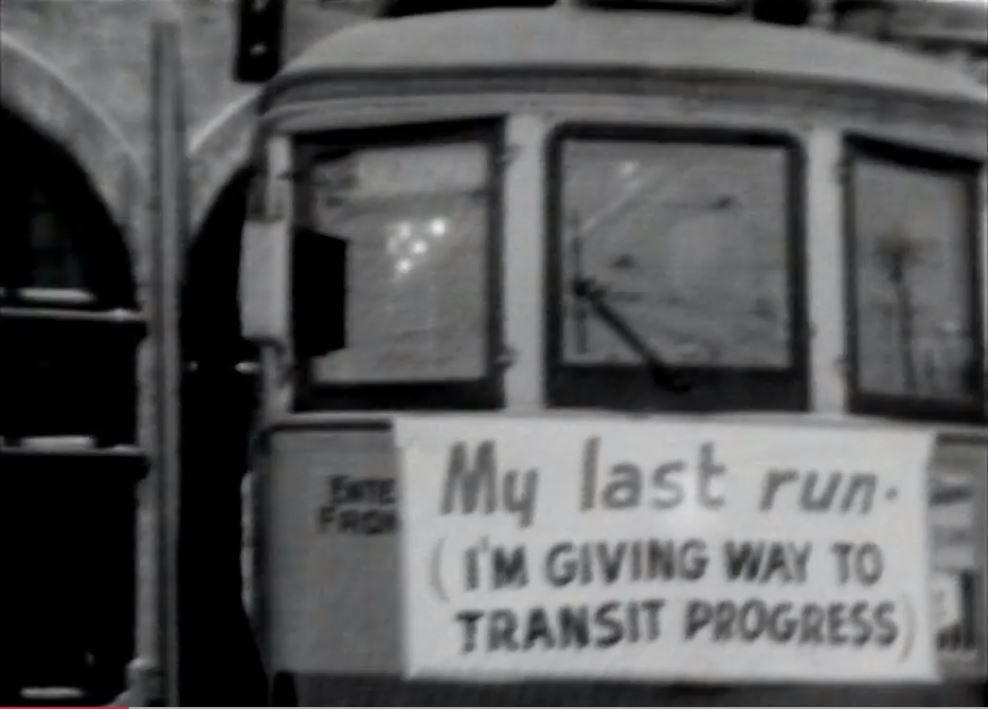
Now, he says, they’re hoping to get the restoration job finished by summer 2019 — in time to put it on display somewhere for the 100-year anniversary of the Winnipeg General Strike.
Cindy Tugwell, executive director of Heritage Winnipeg, said streetcars became a labour icon after the strike's "Bloody Saturday." On that day — June 21, 1919 — a group of strikers demonstrating near city hall tried to turn over a streetcar operated by strike-breakers, and set it on fire.
The brawl that followed led to the deaths of two strikers and more than 30 people were injured, including police. The strike ended four days later.
“The streetcar was a big part of not only transporting people during the strike but certainly Bloody Saturday,” Tugwell said.
“We feel it’s a tangible reminder … that the streetcar is testament to changing labour laws and changing working conditions for Winnipeggers, and really what the strike signified across the country and North America at the time.”
Looking at the stripped-down skeleton of Streetcar 356, Loiselle said he knows restoring it won't be an easy job. Old-timers who come to visit often ask if he’s crazy.
“I'm really excited, actually. I know it looks like a lot of work, but I know that we're getting close now,” he said. “We're really getting close.”
They still need to fundraise: Streetcar 356’s wheels were beyond salvage, so the committee needs to buy a new set. They’ve found options in Alberta and New York, but buying them and getting them to Winnipeg could cost between $25,000 and $50,000.
But now, long past the end of its driving life, Loiselle said the streetcar is looking like it did more than a century ago, when it was first on the assembly line.
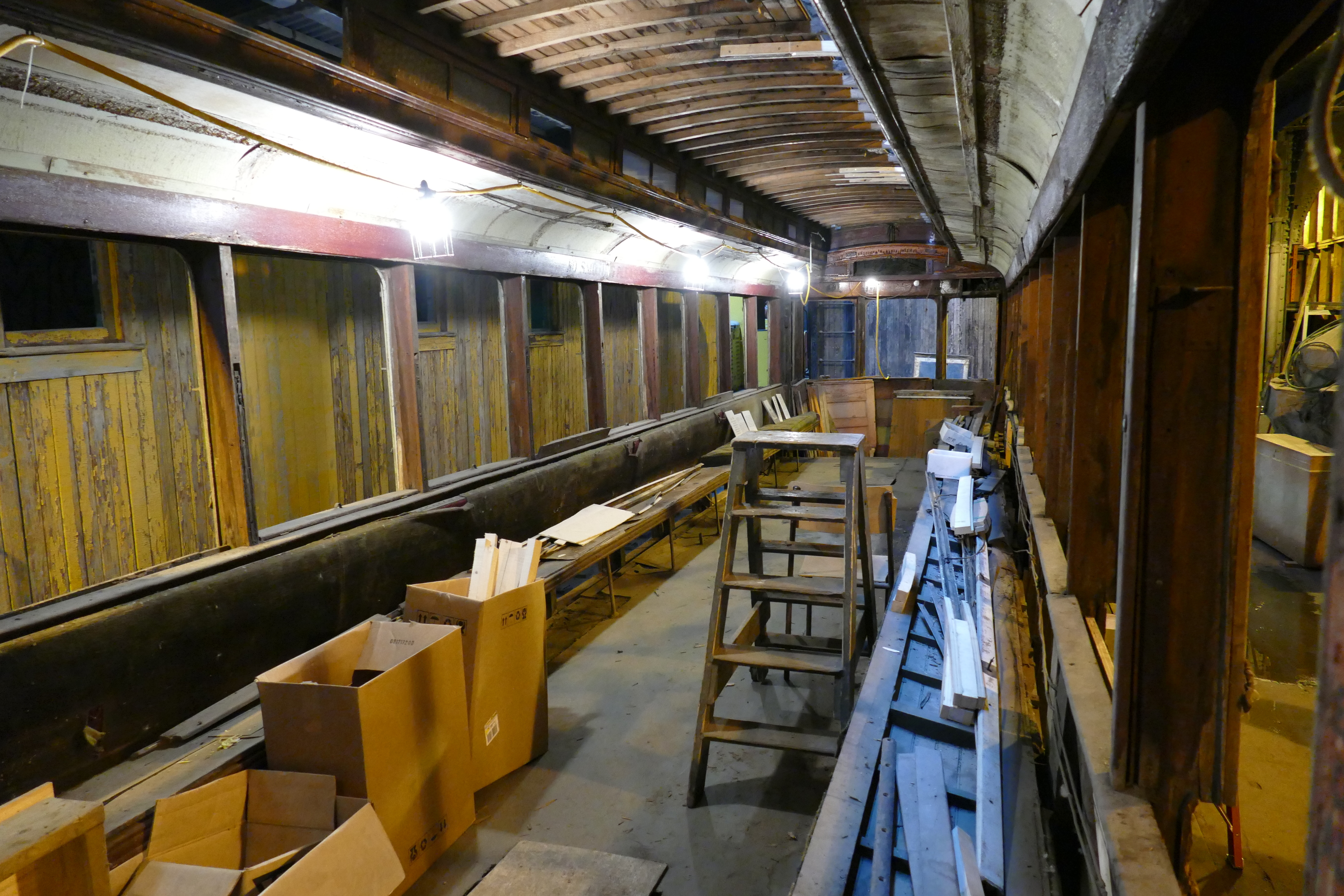
He hopes that children who come see the streetcar will feel inspired by the possibility of electric transportation.
“What I find fascinating is that, you know, this streetcar ran on 440 volts. It had electric motors. It would've been a nice quiet, smooth ride,” he said.
“And I can't help but think, you know, as a hydro [electricity] province, why shouldn't we reinvest one day in ... electric buses and light rail.”
If his grandfather was still around, Loiselle said he thinks he’d be there, helping.
“I think he'd be really, really proud of what we're doing here,” he said.
“I think he's probably somewhere right now just smiling and maybe even chuckling, because there's a lot of work here.”
